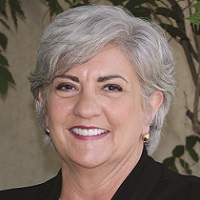 By Rhonda Collins, Chief Nursing Officer, Vocera
By Rhonda Collins, Chief Nursing Officer, Vocera
Twitter: @VoceraComm
At HIMSS18: Visit Vocera Communications, Inc. at #HIMSS18 in Booth 2824 this year in Las Vegas.
Nurses deal with many stressful demands and constant interruptions in their work environments. A feeling of chaos breeds fatigue, and together, chaos and fatigue are part of a bigger picture that can wear down a nurse’s capacity for compassion and joy at work. The experience of a busy day with multiple urgent tasks and ongoing requests can be exhausting. The simple act of making an important call to a colleague, but not having the phone number, can even complicate a nurse’s work to the point of frustration. Frustration can chip away at patience and well-being.
I think of nurse resiliency and technology adoption in healthcare in terms of a hierarchy, much like Maslow’s hierarchy of needs.
At the top of the pyramid is what I call a climate of respect, where nurses feel a sense of control and support. When you solve for the first three areas of need in the hierarchy, starting from the bottom, you have a greater chance of solving for higher level self-actualization. Here’s what the hierarchy looks like, starting at the bottom, and how it relates to the communication tools that nurses are given.
Level 1: Physiological needs
Nurses must have a decent work environment. To begin with, they need sufficient breaks to eat, go to the bathroom, and catch their breaths. Nurses also need communication tools that enable them to connect and collaborate more efficiently.
Using effective communication tools can simplify and streamline clinical workflows. Equipping nurses with technologies that enhance care delivery helps them reclaim time they would otherwise waste on inefficient approaches to communicating with physicians, locating people and resources, getting critical test results, and more.
Addressing physiological aspects in a healthcare environment will enable nurses to reclaim time for basic human needs like rest and meals. As a result, they will have more energy for patient care.
Level 2: Safety Needs
We all have a basic need to feel safe. If this need is not met, nothing else works.
Hospitals and other healthcare environments should equip nurses with tools that enable them to call for immediate help when their physical safety is at risk. For example, a wearable, hands-free communication badge can be used to contact security when someone is threatening a nurse or anyone else on a floor. Hospitals should also create processes or protocols that make bullying unacceptable, and allow nurses to resist bullying without fear of retaliation.
Level 3: Belonging needs
Nurses should also feel empowered at work, and know their feelings and ideas matter. They are the foundation of excellent patient care. Hospital leaders should seek out nurses’ perspectives and expert advice on processes, policies and goals.
Nurses should also be fully involved in co-designing, implementing, and deploying new technology solutions as they are often the ones using them. IT vendors must make sure their solutions fit their customers’ clinical workflows and preferences. Getting nurses’ input and buy-in on the latest innovation before implementing it will improve adoption and go a long way toward achieving the intended objective.
Level 4: Esteem needs
Nurses went to school to take care of patients; and when patient satisfaction and outcomes are good, nurses feel a sense of accomplishment. By creating an environment where care team members can spend more time with patients, rather than running around looking for people, phone numbers or supplies, nurses don’t feel as tired or frustrated. In turn, patients have a better care experience.
Mobile technology is available for purposeful rounding that captures patient feedback about their healthcare experience in real-time, which can help hospitals identify and recognize nurses who provide extraordinary care. This same tool can also be used for staff rounds, which fosters a culture of communication to improve employee engagement, trusted relationships, and well-being.
Level 5: Self-actualization—climate of respect
Having established a solid foundation, nurse leaders can be creative in establishing an environment where they feel energized by their work.
For example, nurse leaders can give frontline nurses some control over their schedules. Rather than require everyone to work 12-hour shifts, they can try to meet staff members’ individual needs. For example, a nurse who wants to go back to school to earn a higher degree may want to work on weekends, and a nurse who needs to spend more time with her family may want to work only during the week. When hospitals create a work environment that builds trust and allows nurses to have input into determining how to solve problems, they feel more supported – and this fuels resiliency.
Hospitals can also make nurses feel supported and respected by giving them the tools they need to communicate effectively with colleagues. In a collaborative, secure and empowering environment, nurses can easily and confidently provide excellent patient care. And when they are able to do that consistently, they will feel self-actualized.
